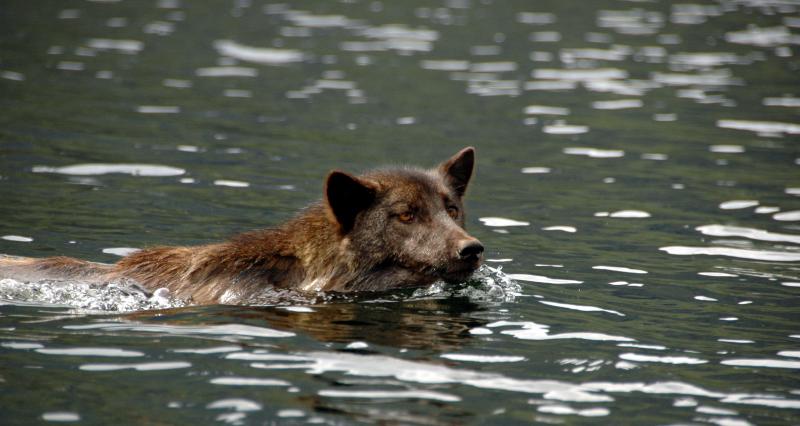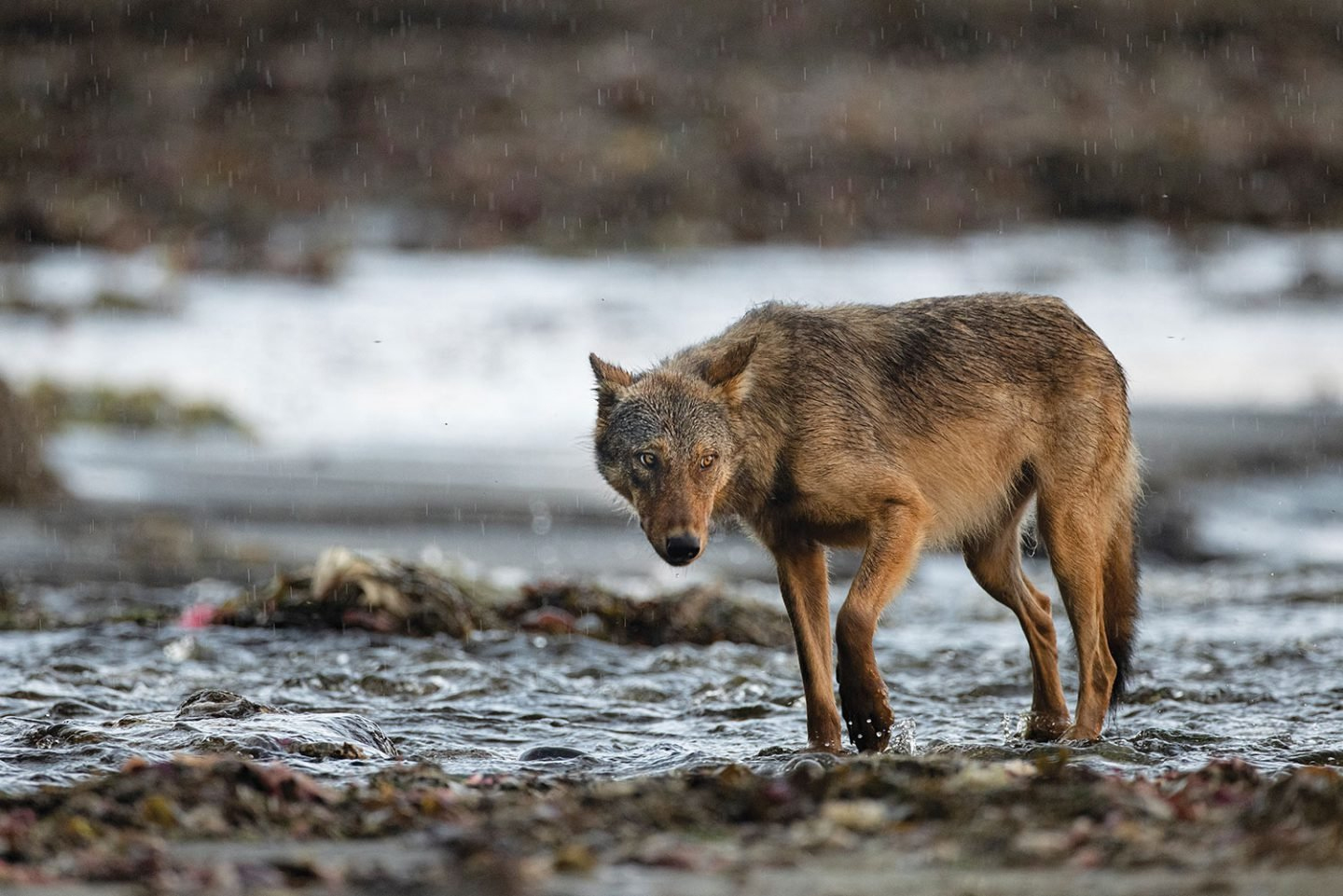Vancouver Coastal Sea Wolf
Author: Theodore Jack
Photos: Thank you to Chris Darimont for the use of his photos.
Scientific name: Canis lupus crassoden
Size range: 4-5 feet from nose to their rump. They often weigh between 29 and 40 kilos (65 to 90 pounds) compared to their inland relatives, who weigh around 36 to 68 kilos.
Identifying Features: Some features that identify the sea wolf from their inland cousins are their sleeker body shape for swimming and lighter fur colours with some being white. Wolves often have large, square-shaped jaws, long, bushy tails and rounded tips to their ears.


Habitat: Vancouver Coastal Sea Wolves are mostly centred in Northern Vancouver Island but can be found as north as southern Alaska and across the BC coast, including on the Discovery Islands. They often live inside the coastal rainforests, finding dens in the roots of trees.
Prey: Sea Wolves have one of the most diverse diets in coastal BC. For their marine diet, they often eat seals and otters by waiting at the shore for them so that they can catch them, often after storms or other events that might force them ashore. Interestingly they generally only eat the heads and brains of salmon, because of the chance of ingesting tapeworms and a deadly parasite which can cause salmon poisoning in canines. Packs of wolves have even swam out to whale carcasses kilometres away to eat. They also will dig into the sand on beaches to find and crack open shellfish like clams and mussels with their jaws. The more inland part of their diet comprises moose and black-tailed deer, though they have recently added the eastern cottontail rabbit. They will catch the prey by using their numbers and speed to chase and bite their victims’ legs till they can overwhelm them.
Life Cycle: Often wolves live in family groups called “packs” which comprise of an adult female and an adult male parent pair and their litter. Once a pup is around 2 years old, they have to leave to find a mate. This is done using howling signals and pheromones from the female. Once they have found each other, they can have one litter a year since the heat cycle means that a female sea wolf is in estrus or fertile around 5-7 days a year in January. The gestation period of a litter is around 62 days. A wolf pup is a general term referring to a wolf less than a year old. When a wolf litter is born, they are unable to see and regulate their body temperature, leading to their mum staying in the den for a month until it can begin to walk and swim.
Fun Facts: Sea Wolves are believed to not have a territory area, instead migrating from island to island, swimming up to 13 kilometres to each island. As wolves grow older, their muzzle will go white. It’s believed that a sea wolf’s diet is made up of up to 85% marine animals.
References:
Tong, Z. (2024, October 16). The Amazing Sea Wolves of the Great Bear Rainforest. Canadian Geographic. https://canadiangeographic.ca/articles/the-amazing-sea-wolves-of-the-great-bear-rainforest/
Coastal wolves. Raincoast Conservation Society. (n.d.). https://www.raincoast.org/coastal-wolves/
Routa, E. (2018, September 25). The Extraordinary Sea Wolves. PANTHALASSA. http://www.panthalassa.org/the-sea-wolves/
Wolves. Discover Vancouver Island. (2019, January 2). https://www.discovervancouverisland.com/wildlife-on-vancouver-island/wolves/
International Wolf Center. (n.d.). Wolf pup development | International Wolf Center. Wolf.org. https://wolf.org/wolf-info/basic-wolf-info/biology-and-behavior/pup-development/

